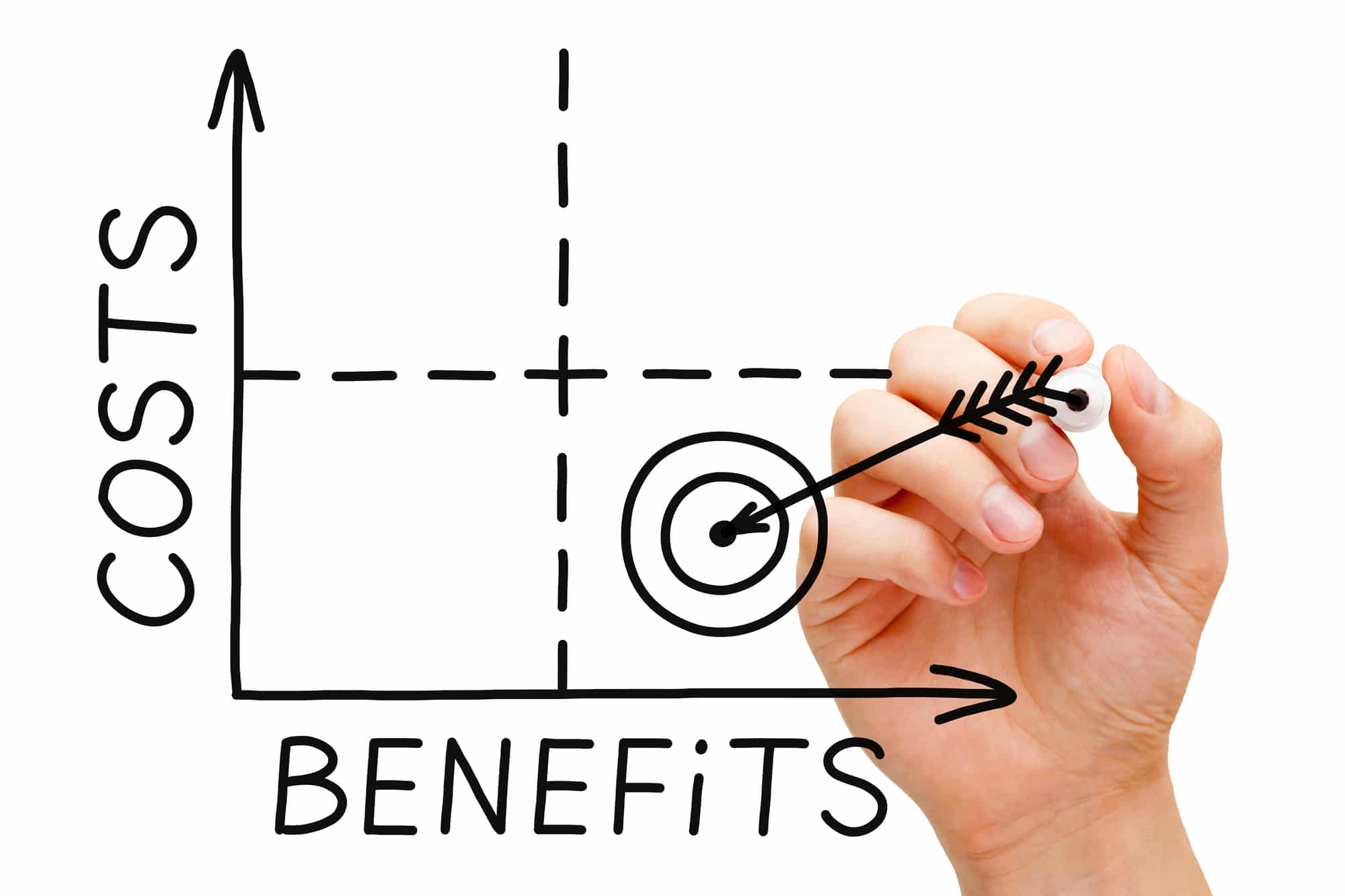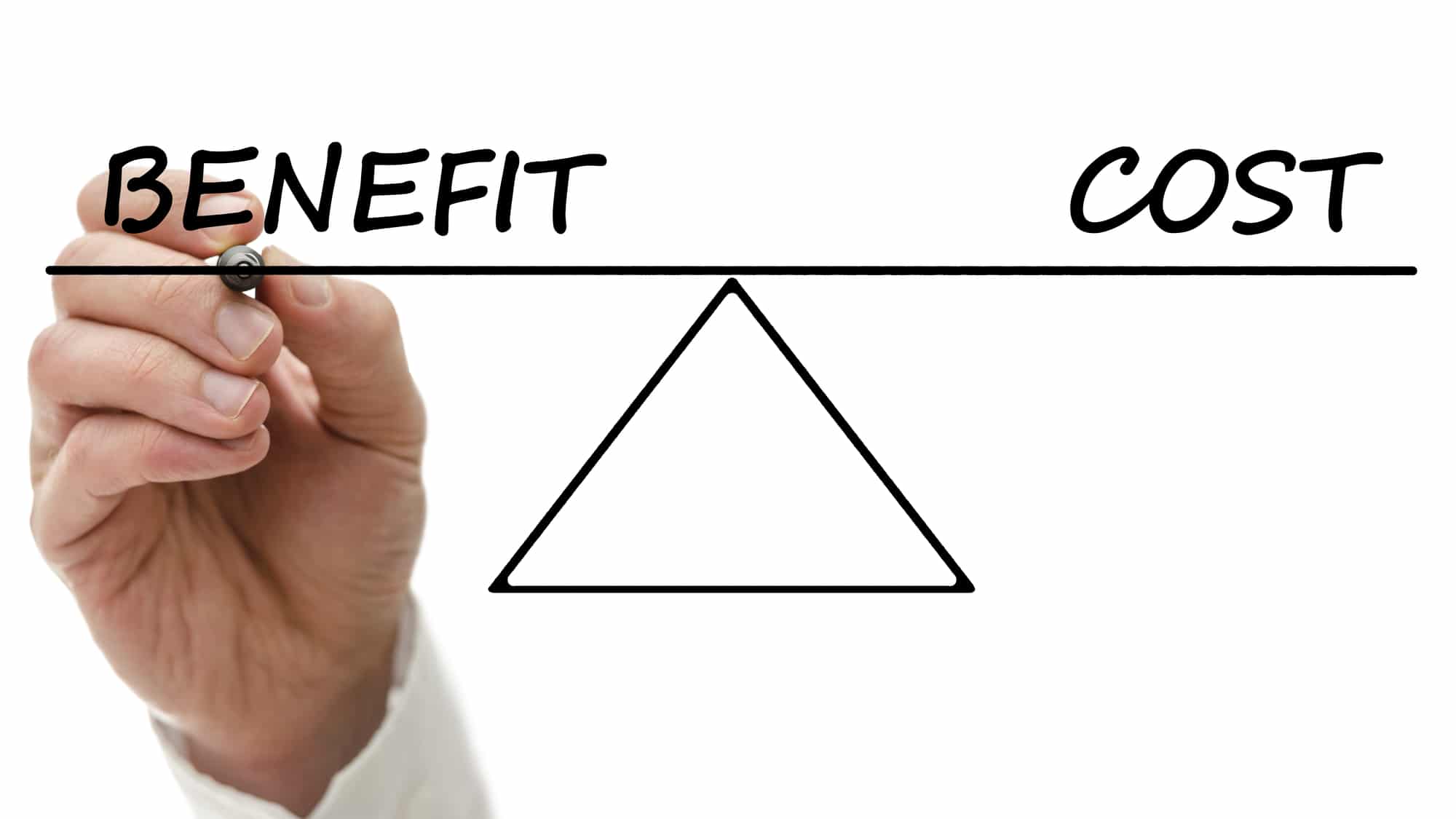Cost benefit analysis is the process of comparing the costs and benefits of a business decision. It's a popular model in the strategic planning toolset, since it provides a straightforward way to evaluate any type of decision. In this article, we'll take a closer look at cost benefit analysis, providing a definition, pros and cons, and step-by-step instructions for this unique tool.
What Is Cost Benefit Analysis?
Cost benefit analysis, also known as benefit cost analysis, is a tool for comparing the costs of a decision with its benefits. The tool is often used in the business world, where the decision can be anything from developing a new product, to changing an existing process.
It's made possible by placing a monetary value on both the costs and benefits of a decision. Some costs and benefits are easy to measure since they directly affect the business in a monetary way. These include the direct costs of purchasing new equipment or the direct benefits of a certain number of sales. Other costs and benefits, like the cost of poor customer satisfaction or benefit of brand awareness, are impossible to measure precisely, but can still be estimated.
Cost benefit analysis can be used to evaluate a single path or to compare multiple paths. When there's just one path in question, the tool can suggest whether to pursue that path or stay put. When there are multiple paths, the tool can help to identify the best choice by looking at the benefit-cost ratio of each option.

What is Benefit-Cost Ratio (BCR)
Cost benefit ratio is the ratio of the costs associated with a certain decision to the benefits associated with a certain decision. It's more commonly known as benefit cost ratio, in which case the ratio is reversed (benefits to costs, instead of costs to benefits).
Since both costs and benefits can be expressed in monetary terms, these ratios can also be expressed numerically. As a result, cost benefit or benefit cost ratios lend themselves well to comparison, which is why cost benefit analysis can be used to compare two or more definitions.
The process is simple. For each decision or path in question, identify, calculate, and sum up the associated benefits and costs. Then, divide the total benefits by the total costs to obtain the benefit cost ratio for that particular choice. After doing this for all paths, compare the ratios to see which is highest — in other words, to see which path offers the most benefit for the least cost.

Pros and Cons of Cost Benefit Analysis
Cost benefit analysis is a popular tool, but it also has its limitations. In this section, we'll discuss both the pros and cons of cost benefit analysis, so you can decide whether the tool is right for you.
The primary pro of cost benefit analysis is that it is easy to use. No complicated statistics are involved, so anyone can estimate and add up the numbers for a certain path. Another pro is that the tool is flexible: it can be used to evaluate a single decision or to compare multiple.
The major con of cost benefit analysis is, of course, that it's almost impossible to accurately estimate the magnitude of some costs or benefits. For example, how can you put a number on the cost of the reduced customer satisfaction you would have if you removed a single person from your support team? Other than this major issue, there aren't really any cons of cost benefit analysis.
Overall, we think cost benefit analysis is still a useful tool. However, in some circumstances, it might be too difficult to estimate costs or benefits so as to draw meaningful conclusions. In these cases, consider cost benefit analysis as a guiding tool, but look to other business analysis techniques to support your conclusion.
When to Do a Cost Benefit Analysis
As with any business analysis tool, you may be wondering when to use cost benefit analysis. The most obvious answer is that you should use cost benefit analysis when contemplating a specific business decision, or when comparing multiple business decisions. The tool may help you make the right choice.
Aside from this, cost benefit analysis can also be used to evaluate past decisions. In this case, it can only provide retrospective insight. This makes it useful for higher-ups who want to evaluate their employees' decision-making skills, or for organizations who seek to learn from their past decisions — right or wrong.

How to Do a Cost Benefit Analysis
As mentioned earlier, cost benefit analysis is an easy tool to get started with. Let's take a look at the steps involved:
- Identify the costs associated with a certain path or decision. Take into account not only direct costs, which have a clear monetary value associated with them but also indirect or intangible costs, where the monetary value can be approximated.
- Identify the benefits of the path or decision. Once again, don't just look at the direct financial benefits, but also look at how your organization may benefit indirectly.
- Estimate the dollar value of all the indirect or intangible costs and benefits you identified above. When unsure, account for the worst-case scenario, assuming costs on the higher end of the scale and benefits on the lower end of the scale. If comparing multiple paths, be consistent with how you estimate these values, so as to ensure a fair comparison.
- Calculate the benefit-cost ratio of each decision. If there is just one decision in question, look to see if the benefits outweigh the costs (i.e. the benefit-cost ratio is greater than one). If there are multiple decisions in question, identify the path with the highest benefit-cost ratio.
Conclusion
Cost benefit analysis is a straightforward tool for evaluating business decisions. It revolves around identifying and estimating both the costs and benefits of one or more paths. When one path is analyzed, the tool provides objective insight on whether it should be acted on. When multiple paths are analyzed, the tool helps to identify the most lucrative of them.









